





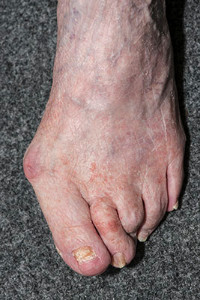 There are many patients who may notice a bony protrusion developing on the side of their big toe. This may be consistent with the signs of a bunion, which typically produces pain and discomfort. It is considered to be a bone deformity, and there are specific reasons why this condition may develop. These causes can include genetic factors, or it may gradually appear from wearing shoes that do not have adequate room for the toes to move freely in. If the bunion is severe, larger shoes may have to be purchased, which can accommodate the growing bunion. Many patients find mild relief when a small pad is worn over it, as this may help to protect it from friction that may be caused by wearing shoes. If you are afflicted with a bunion, it is strongly suggested that you consult with a podiatrist who can offer you proper treatment options.
There are many patients who may notice a bony protrusion developing on the side of their big toe. This may be consistent with the signs of a bunion, which typically produces pain and discomfort. It is considered to be a bone deformity, and there are specific reasons why this condition may develop. These causes can include genetic factors, or it may gradually appear from wearing shoes that do not have adequate room for the toes to move freely in. If the bunion is severe, larger shoes may have to be purchased, which can accommodate the growing bunion. Many patients find mild relief when a small pad is worn over it, as this may help to protect it from friction that may be caused by wearing shoes. If you are afflicted with a bunion, it is strongly suggested that you consult with a podiatrist who can offer you proper treatment options.
If you are suffering from bunions, contact one of our podiatrists of Active Foot and Ankle Care, LLC. Our doctors can provide the care you need to keep you pain-free and on your feet.
What Is a Bunion?
A bunion is formed of swollen tissue or an enlargement of boney growth, usually located at the base joint of the toe that connects to the foot. The swelling occurs due to the bones in the big toe shifting inward, which impacts the other toes of the foot. This causes the area around the base of the big toe to become inflamed and painful.
Why Do Bunions Form?
Genetics – Susceptibility to bunions are often hereditary
Stress on the feet – Poorly fitted and uncomfortable footwear that places stress on feet, such as heels, can worsen existing bunions
How Are Bunions Diagnosed?
Doctors often perform two tests – blood tests and x-rays – when trying to diagnose bunions, especially in the early stages of development. Blood tests help determine if the foot pain is being caused by something else, such as arthritis, while x-rays provide a clear picture of your bone structure to your doctor.
How Are Bunions Treated?
If you have any questions, please feel free to contact our offices located in Fair Lawn and Riverdale, New Jersey. We offer the newest diagnostic and treatment technologies for all your foot care needs.
Read more about What Are Bunions? There are many patients who may notice a bony protrusion developing on the side of their big toe. This may be consistent with the signs of a bunion, which typically produces pain and discomfort. It is considered to be a bone deformity, and there are specific reasons why this condition may develop. These causes can include genetic factors, or it may gradually appear from wearing shoes that do not have adequate room for the toes to move freely in. If the bunion is severe, larger shoes may have to be purchased, which can accommodate the growing bunion. Many patients find mild relief when a small pad is worn over it, as this may help to protect it from friction that may be caused by wearing shoes. If you are afflicted with a bunion, it is strongly suggested that you consult with a podiatrist who can offer you proper treatment options.
There are many patients who may notice a bony protrusion developing on the side of their big toe. This may be consistent with the signs of a bunion, which typically produces pain and discomfort. It is considered to be a bone deformity, and there are specific reasons why this condition may develop. These causes can include genetic factors, or it may gradually appear from wearing shoes that do not have adequate room for the toes to move freely in. If the bunion is severe, larger shoes may have to be purchased, which can accommodate the growing bunion. Many patients find mild relief when a small pad is worn over it, as this may help to protect it from friction that may be caused by wearing shoes. If you are afflicted with a bunion, it is strongly suggested that you consult with a podiatrist who can offer you proper treatment options.
If you are suffering from bunions, contact one of our podiatrists of Active Foot and Ankle Care, LLC. Our doctors can provide the care you need to keep you pain-free and on your feet.
What Is a Bunion?
A bunion is formed of swollen tissue or an enlargement of boney growth, usually located at the base joint of the toe that connects to the foot. The swelling occurs due to the bones in the big toe shifting inward, which impacts the other toes of the foot. This causes the area around the base of the big toe to become inflamed and painful.
Why Do Bunions Form?
Genetics – Susceptibility to bunions are often hereditary
Stress on the feet – Poorly fitted and uncomfortable footwear that places stress on feet, such as heels, can worsen existing bunions
How Are Bunions Diagnosed?
Doctors often perform two tests – blood tests and x-rays – when trying to diagnose bunions, especially in the early stages of development. Blood tests help determine if the foot pain is being caused by something else, such as arthritis, while x-rays provide a clear picture of your bone structure to your doctor.
How Are Bunions Treated?
If you have any questions, please feel free to contact our offices located in Fair Lawn, Riverdale, and Englewood, NJ . We offer the newest diagnostic and treatment technologies for all your foot care needs.
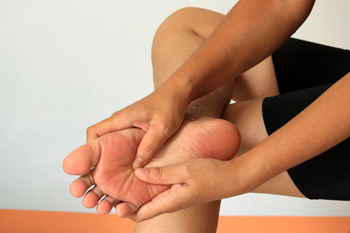 Each foot consists of twenty-six bones, and bears the weight of the body. Foot pain is a common ailment among the majority of the population, and typically affects all parts of the foot. Sources of foot pain may consist of wearing shoes that do not fit properly, and participating in high-impact sporting activities. Additionally, foot pain can be caused by existing conditions that can include diabetes, poor circulation, and arthritis. Many patients experience corns, ingrown toenails, and bunions, which often cause severe pain and discomfort. If you have foot pain for any reason, it is suggested that you consult with a podiatrist as quickly as possible so they can begin treatment to relieve your pain.
Each foot consists of twenty-six bones, and bears the weight of the body. Foot pain is a common ailment among the majority of the population, and typically affects all parts of the foot. Sources of foot pain may consist of wearing shoes that do not fit properly, and participating in high-impact sporting activities. Additionally, foot pain can be caused by existing conditions that can include diabetes, poor circulation, and arthritis. Many patients experience corns, ingrown toenails, and bunions, which often cause severe pain and discomfort. If you have foot pain for any reason, it is suggested that you consult with a podiatrist as quickly as possible so they can begin treatment to relieve your pain.
Foot Pain
Foot pain can be extremely painful and debilitating. If you have a foot pain, consult with one of our podiatrists from Active Foot and Ankle Care, LLC. Our doctors will assess your condition and provide you with quality foot and ankle treatment.
Causes
Foot pain is a very broad condition that could be caused by one or more ailments. The most common include:
Diagnosis
To figure out the cause of foot pain, podiatrists utilize several different methods. This can range from simple visual inspections and sensation tests to X-rays and MRI scans. Prior medical history, family medical history, and any recent physical traumatic events will all be taken into consideration for a proper diagnosis.
Treatment
Treatment depends upon the cause of the foot pain. Whether it is resting, staying off the foot, or having surgery; podiatrists have a number of treatment options available for foot pain.
If you have any questions, please feel free to contact our offices located in Fair Lawn and Riverdale, New Jersey. We offer the newest diagnostic and treatment technologies for all your foot care needs.
Read more about Foot Pain Each foot consists of twenty-six bones, and bears the weight of the body. Foot pain is a common ailment among the majority of the population, and typically affects all parts of the foot. Sources of foot pain may consist of wearing shoes that do not fit properly, and participating in high-impact sporting activities. Additionally, foot pain can be caused by existing conditions that can include diabetes, poor circulation, and arthritis. Many patients experience corns, ingrown toenails, and bunions, which often cause severe pain and discomfort. If you have foot pain for any reason, it is suggested that you consult with a podiatrist as quickly as possible so they can begin treatment to relieve your pain.
Each foot consists of twenty-six bones, and bears the weight of the body. Foot pain is a common ailment among the majority of the population, and typically affects all parts of the foot. Sources of foot pain may consist of wearing shoes that do not fit properly, and participating in high-impact sporting activities. Additionally, foot pain can be caused by existing conditions that can include diabetes, poor circulation, and arthritis. Many patients experience corns, ingrown toenails, and bunions, which often cause severe pain and discomfort. If you have foot pain for any reason, it is suggested that you consult with a podiatrist as quickly as possible so they can begin treatment to relieve your pain.
Foot Pain
Foot pain can be extremely painful and debilitating. If you have a foot pain, consult with one of our podiatrists from Active Foot and Ankle Care, LLC. Our doctors will assess your condition and provide you with quality foot and ankle treatment.
Causes
Foot pain is a very broad condition that could be caused by one or more ailments. The most common include:
Diagnosis
To figure out the cause of foot pain, podiatrists utilize several different methods. This can range from simple visual inspections and sensation tests to X-rays and MRI scans. Prior medical history, family medical history, and any recent physical traumatic events will all be taken into consideration for a proper diagnosis.
Treatment
Treatment depends upon the cause of the foot pain. Whether it is resting, staying off the foot, or having surgery; podiatrists have a number of treatment options available for foot pain.
If you have any questions, please feel free to contact our offices located in Fair Lawn, Riverdale, and Englewood, NJ . We offer the newest diagnostic and treatment technologies for all your foot care needs.
Read more about Foot Pain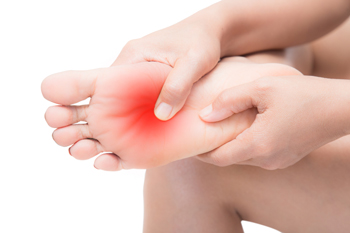 Peripheral artery disease, otherwise referred to as PAD, causes the blood vessels to narrow, which in turn, restricts blood flow to different parts of the body, including the feet. To help prevent developing this condition, it’s suggested that you commonly partake in physical activity and maintain low cholesterol levels. PAD can be difficult to diagnose, which is why it is so important to be aware of the symptoms. Hair loss on the feet and legs, leg weakness, ulcers on the feet or legs, numbness towards the lower extremity regions, and the foot or leg feeling cold, are all signs indicating you may have developed PAD. There are several methods to test for PAD. In order to properly diagnose this condition and receive the proper treatment, it is highly recommended to consult with a podiatrist.
Peripheral artery disease, otherwise referred to as PAD, causes the blood vessels to narrow, which in turn, restricts blood flow to different parts of the body, including the feet. To help prevent developing this condition, it’s suggested that you commonly partake in physical activity and maintain low cholesterol levels. PAD can be difficult to diagnose, which is why it is so important to be aware of the symptoms. Hair loss on the feet and legs, leg weakness, ulcers on the feet or legs, numbness towards the lower extremity regions, and the foot or leg feeling cold, are all signs indicating you may have developed PAD. There are several methods to test for PAD. In order to properly diagnose this condition and receive the proper treatment, it is highly recommended to consult with a podiatrist.
Peripheral artery disease can pose a serious risk to your health. It can increase the risk of stroke and heart attack. If you have symptoms of peripheral artery disease, consult with one of our podiatrists from Active Foot and Ankle Care, LLC. Our doctors will assess your condition and provide you with quality foot and ankle treatment.
Peripheral artery disease (PAD) is when arteries are constricted due to plaque (fatty deposits) build-up. This results in less blood flow to the legs and other extremities. The main cause of PAD is atherosclerosis, in which plaque builds up in the arteries.
Symptoms
Symptoms of PAD include:
It is important to note that a majority of individuals never show any symptoms of PAD.
Diagnosis
While PAD occurs in the legs and arteries, Podiatrists can diagnose PAD. Podiatrists utilize a test called an ankle-brachial index (ABI). An ABI test compares blood pressure in your arm to you ankle to see if any abnormality occurs. Ultrasound and imaging devices may also be used.
Treatment
Fortunately, lifestyle changes such as maintaining a healthy diet, exercising, managing cholesterol and blood sugar levels, and quitting smoking, can all treat PAD. Medications that prevent clots from occurring can be prescribed. Finally, in some cases, surgery may be recommended.
If you have any questions, please feel free to contact our offices located in Fair Lawn and Riverdale, New Jersey. We offer the newest diagnostic and treatment technologies for all your foot care needs.
Read more about Peripheral Artery Disease Peripheral artery disease, otherwise referred to as PAD, causes the blood vessels to narrow, which in turn, restricts blood flow to different parts of the body, including the feet. To help prevent developing this condition, it’s suggested that you commonly partake in physical activity and maintain low cholesterol levels. PAD can be difficult to diagnose, which is why it is so important to be aware of the symptoms. Hair loss on the feet and legs, leg weakness, ulcers on the feet or legs, numbness towards the lower extremity regions, and the foot or leg feeling cold, are all signs indicating you may have developed PAD. There are several methods to test for PAD. In order to properly diagnose this condition and receive the proper treatment, it is highly recommended to consult with a podiatrist.
Peripheral artery disease, otherwise referred to as PAD, causes the blood vessels to narrow, which in turn, restricts blood flow to different parts of the body, including the feet. To help prevent developing this condition, it’s suggested that you commonly partake in physical activity and maintain low cholesterol levels. PAD can be difficult to diagnose, which is why it is so important to be aware of the symptoms. Hair loss on the feet and legs, leg weakness, ulcers on the feet or legs, numbness towards the lower extremity regions, and the foot or leg feeling cold, are all signs indicating you may have developed PAD. There are several methods to test for PAD. In order to properly diagnose this condition and receive the proper treatment, it is highly recommended to consult with a podiatrist.
Peripheral artery disease can pose a serious risk to your health. It can increase the risk of stroke and heart attack. If you have symptoms of peripheral artery disease, consult with one of our podiatrists from Active Foot and Ankle Care, LLC. Our doctors will assess your condition and provide you with quality foot and ankle treatment.
Peripheral artery disease (PAD) is when arteries are constricted due to plaque (fatty deposits) build-up. This results in less blood flow to the legs and other extremities. The main cause of PAD is atherosclerosis, in which plaque builds up in the arteries.
Symptoms
Symptoms of PAD include:
It is important to note that a majority of individuals never show any symptoms of PAD.
Diagnosis
While PAD occurs in the legs and arteries, Podiatrists can diagnose PAD. Podiatrists utilize a test called an ankle-brachial index (ABI). An ABI test compares blood pressure in your arm to you ankle to see if any abnormality occurs. Ultrasound and imaging devices may also be used.
Treatment
Fortunately, lifestyle changes such as maintaining a healthy diet, exercising, managing cholesterol and blood sugar levels, and quitting smoking, can all treat PAD. Medications that prevent clots from occurring can be prescribed. Finally, in some cases, surgery may be recommended.
If you have any questions, please feel free to contact our offices located in Fair Lawn, Riverdale, and Englewood, NJ . We offer the newest diagnostic and treatment technologies for all your foot care needs.
Read more about Peripheral Artery Disease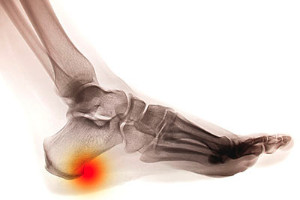 The medical condition that is known as a heel spur can develop from standing on hard surfaces for the majority of the day, or from running and participating in jumping activities. It is defined as a bony growth that forms as a result of heel stress, and develops on the heel bone. Some patients experience severe pain and discomfort from heel spurs. Mild relief may be found when correct treatment is started. This can consist of wearing arch supports, performing specific stretches that can help strengthen the heel, or wearing shoes that have adequate cushioning. If you have developed a heel spur, it is strongly advised that you consult with a podiatrist who can properly treat heel spurs.
The medical condition that is known as a heel spur can develop from standing on hard surfaces for the majority of the day, or from running and participating in jumping activities. It is defined as a bony growth that forms as a result of heel stress, and develops on the heel bone. Some patients experience severe pain and discomfort from heel spurs. Mild relief may be found when correct treatment is started. This can consist of wearing arch supports, performing specific stretches that can help strengthen the heel, or wearing shoes that have adequate cushioning. If you have developed a heel spur, it is strongly advised that you consult with a podiatrist who can properly treat heel spurs.
Heel spurs can be incredibly painful and sometimes may make you unable to participate in physical activities. To get medical care for your heel spurs, contact one of our podiatrists from Active Foot and Ankle Care, LLC. Our doctors will do everything possible to treat your condition.
Heels Spurs
Heel spurs are formed by calcium deposits on the back of the foot where the heel is. This can also be caused by small fragments of bone breaking off one section of the foot, attaching onto the back of the foot. Heel spurs can also be bone growth on the back of the foot and may grow in the direction of the arch of the foot.
Older individuals usually suffer from heel spurs and pain sometimes intensifies with age. One of the main condition's spurs are related to is plantar fasciitis.
Pain
The pain associated with spurs is often because of weight placed on the feet. When someone is walking, their entire weight is concentrated on the feet. Bone spurs then have the tendency to affect other bones and tissues around the foot. As the pain continues, the feet will become tender and sensitive over time.
Treatments
There are many ways to treat heel spurs. If one is suffering from heel spurs in conjunction with pain, there are several methods for healing. Medication, surgery, and herbal care are some options.
If you have any questions feel free to contact our offices located in Fair Lawn and Riverdale, New Jersey. We offer the latest in diagnostic and treatment technology to meet your needs.
Read more about Heel Spurs The medical condition that is known as a heel spur can develop from standing on hard surfaces for the majority of the day, or from running and participating in jumping activities. It is defined as a bony growth that forms as a result of heel stress, and develops on the heel bone. Some patients experience severe pain and discomfort from heel spurs. Mild relief may be found when correct treatment is started. This can consist of wearing arch supports, performing specific stretches that can help strengthen the heel, or wearing shoes that have adequate cushioning. If you have developed a heel spur, it is strongly advised that you consult with a podiatrist who can properly treat heel spurs.
The medical condition that is known as a heel spur can develop from standing on hard surfaces for the majority of the day, or from running and participating in jumping activities. It is defined as a bony growth that forms as a result of heel stress, and develops on the heel bone. Some patients experience severe pain and discomfort from heel spurs. Mild relief may be found when correct treatment is started. This can consist of wearing arch supports, performing specific stretches that can help strengthen the heel, or wearing shoes that have adequate cushioning. If you have developed a heel spur, it is strongly advised that you consult with a podiatrist who can properly treat heel spurs.
Heel spurs can be incredibly painful and sometimes may make you unable to participate in physical activities. To get medical care for your heel spurs, contact one of our podiatrists from Active Foot and Ankle Care, LLC. Our doctors will do everything possible to treat your condition.
Heels Spurs
Heel spurs are formed by calcium deposits on the back of the foot where the heel is. This can also be caused by small fragments of bone breaking off one section of the foot, attaching onto the back of the foot. Heel spurs can also be bone growth on the back of the foot and may grow in the direction of the arch of the foot.
Older individuals usually suffer from heel spurs and pain sometimes intensifies with age. One of the main condition's spurs are related to is plantar fasciitis.
Pain
The pain associated with spurs is often because of weight placed on the feet. When someone is walking, their entire weight is concentrated on the feet. Bone spurs then have the tendency to affect other bones and tissues around the foot. As the pain continues, the feet will become tender and sensitive over time.
Treatments
There are many ways to treat heel spurs. If one is suffering from heel spurs in conjunction with pain, there are several methods for healing. Medication, surgery, and herbal care are some options.
If you have any questions feel free to contact our offices located in Fair Lawn, Riverdale, and Englewood, NJ . We offer the latest in diagnostic and treatment technology to meet your needs.
Read more about Heel Spurs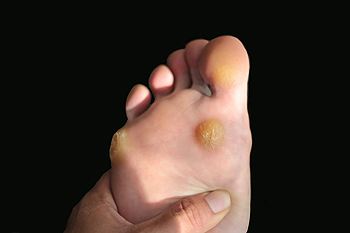 The body’s natural response is to protect itself, which is why the skin may develop a hardened layer of skin in the form of a corn. Corns will typically develop due to an increased level of friction. While this protective layer may be to help the skin of the foot, it can also be very painful and sensitive. To help avoid this, it’s important to wear shoes that put little to no pressure on the feet. If you find your corn to be uncomfortable, some patients have said that soaking the feet in warm water, followed by filing the corn with a pumice stone, can be an effective way to alleviate the pain. If you would like more information on how to best treat your corn, it is recommended that you consult with a podiatrist for professional care and advice.
The body’s natural response is to protect itself, which is why the skin may develop a hardened layer of skin in the form of a corn. Corns will typically develop due to an increased level of friction. While this protective layer may be to help the skin of the foot, it can also be very painful and sensitive. To help avoid this, it’s important to wear shoes that put little to no pressure on the feet. If you find your corn to be uncomfortable, some patients have said that soaking the feet in warm water, followed by filing the corn with a pumice stone, can be an effective way to alleviate the pain. If you would like more information on how to best treat your corn, it is recommended that you consult with a podiatrist for professional care and advice.
Corns can make walking very painful and should be treated immediately. If you have questions regarding your feet and ankles, contact one of our podiatrists of Active Foot and Ankle Care, LLC. Our doctors will treat your foot and ankle needs.
Corns: What Are They? And How Do You Get Rid of Them?
Corns are thickened areas on the skin that can become painful. They are caused by excessive pressure and friction on the skin. Corns press into the deeper layers of the skin and are usually round in shape.
Ways to Prevent Corns
There are many ways to get rid of painful corns such as:
Treating Corns
Although most corns slowly disappear when the friction or pressure stops, this isn’t always the case. Consult with your podiatrist to determine the best treatment option for your case of corns.
If you have any questions please feel free to contact our offices located in Fair Lawn and Riverdale, New Jersey. We offer the newest diagnostic and treatment technologies for all your foot and ankle needs.
Read more about Everything You Need to Know About Corns The body’s natural response is to protect itself, which is why the skin may develop a hardened layer of skin in the form of a corn. Corns will typically develop due to an increased level of friction. While this protective layer may be to help the skin of the foot, it can also be very painful and sensitive. To help avoid this, it’s important to wear shoes that put little to no pressure on the feet. If you find your corn to be uncomfortable, some patients have said that soaking the feet in warm water, followed by filing the corn with a pumice stone, can be an effective way to alleviate the pain. If you would like more information on how to best treat your corn, it is recommended that you consult with a podiatrist for professional care and advice.
The body’s natural response is to protect itself, which is why the skin may develop a hardened layer of skin in the form of a corn. Corns will typically develop due to an increased level of friction. While this protective layer may be to help the skin of the foot, it can also be very painful and sensitive. To help avoid this, it’s important to wear shoes that put little to no pressure on the feet. If you find your corn to be uncomfortable, some patients have said that soaking the feet in warm water, followed by filing the corn with a pumice stone, can be an effective way to alleviate the pain. If you would like more information on how to best treat your corn, it is recommended that you consult with a podiatrist for professional care and advice.
Corns can make walking very painful and should be treated immediately. If you have questions regarding your feet and ankles, contact one of our podiatrists of Active Foot and Ankle Care, LLC. Our doctors will treat your foot and ankle needs.
Corns: What Are They? And How Do You Get Rid of Them?
Corns are thickened areas on the skin that can become painful. They are caused by excessive pressure and friction on the skin. Corns press into the deeper layers of the skin and are usually round in shape.
Ways to Prevent Corns
There are many ways to get rid of painful corns such as:
Treating Corns
Although most corns slowly disappear when the friction or pressure stops, this isn’t always the case. Consult with your podiatrist to determine the best treatment option for your case of corns.
If you have any questions please feel free to contact our offices located in Fair Lawn, Riverdale, and Englewood, NJ . We offer the newest diagnostic and treatment technologies for all your foot and ankle needs.
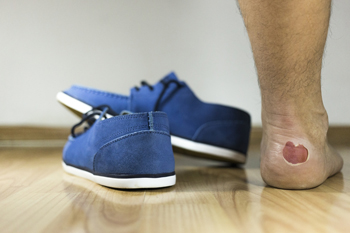 Blisters on the feet typically develop as a result of excessive friction, and can cause pain and discomfort. It may help to protect the feet while participating in running and jumping activities, and this can be accomplished by wearing shoes and socks that fit correctly. A blister is defined as a small sac that is filled with fluid. This protects the damaged and raw area as the healing process occurs. It will generally drain on its own once new skin has formed. It may be helpful to protect the blister with a soft bandage as it heals, as this may enable you to continue daily activities. If you have developed a blister on your foot that is bothersome, or has become infected, it is suggested that you speak with a podiatrist who can help you manage this condition.
Blisters on the feet typically develop as a result of excessive friction, and can cause pain and discomfort. It may help to protect the feet while participating in running and jumping activities, and this can be accomplished by wearing shoes and socks that fit correctly. A blister is defined as a small sac that is filled with fluid. This protects the damaged and raw area as the healing process occurs. It will generally drain on its own once new skin has formed. It may be helpful to protect the blister with a soft bandage as it heals, as this may enable you to continue daily activities. If you have developed a blister on your foot that is bothersome, or has become infected, it is suggested that you speak with a podiatrist who can help you manage this condition.
Blisters are prone to making everyday activities extremely uncomfortable. If your feet are hurting, contact one of our podiatrists of Active Foot and Ankle Care, LLC. Our doctors can provide the care you need to keep you pain-free and on your feet.
Foot Blisters
Foot blisters develop as a result of constantly wearing tight or ill-fitting footwear. This happens due to the constant rubbing from the shoe, which can often lead to pain.
What Are Foot Blisters?
A foot blister is a small fluid-filled pocket that forms on the upper-most layer of the skin. Blisters are filled with clear fluid and can lead to blood drainage or pus if the area becomes infected.
How Do Blisters Form?
Blisters on the feet are often the result of constant friction of skin and material, usually by shoe rubbing. Walking in sandals, boots, or shoes that don’t fit properly for long periods of time can result in a blister. Having consistent foot moisture and humidity can easily lead to blister formation.
Prevention & Treatment
It is important to properly care for the affected area in order to prevent infection and ease the pain. Do not lance the blister and use a Band-Aid to provide pain relief. Also, be sure to keep your feet dry and wear proper fitting shoes. If you see blood or pus in a blister, seek assistance from a podiatrist.
If you have any questions, please feel free to contact our offices located in Fair Lawn and Riverdale, New Jersey. We offer the newest diagnostic and treatment technologies for all your foot care needs.
Read more about Blisters Blisters on the feet typically develop as a result of excessive friction, and can cause pain and discomfort. It may help to protect the feet while participating in running and jumping activities, and this can be accomplished by wearing shoes and socks that fit correctly. A blister is defined as a small sac that is filled with fluid. This protects the damaged and raw area as the healing process occurs. It will generally drain on its own once new skin has formed. It may be helpful to protect the blister with a soft bandage as it heals, as this may enable you to continue daily activities. If you have developed a blister on your foot that is bothersome, or has become infected, it is suggested that you speak with a podiatrist who can help you manage this condition.
Blisters on the feet typically develop as a result of excessive friction, and can cause pain and discomfort. It may help to protect the feet while participating in running and jumping activities, and this can be accomplished by wearing shoes and socks that fit correctly. A blister is defined as a small sac that is filled with fluid. This protects the damaged and raw area as the healing process occurs. It will generally drain on its own once new skin has formed. It may be helpful to protect the blister with a soft bandage as it heals, as this may enable you to continue daily activities. If you have developed a blister on your foot that is bothersome, or has become infected, it is suggested that you speak with a podiatrist who can help you manage this condition.
Blisters are prone to making everyday activities extremely uncomfortable. If your feet are hurting, contact one of our podiatrists of Active Foot and Ankle Care, LLC. Our doctors can provide the care you need to keep you pain-free and on your feet.
Foot Blisters
Foot blisters develop as a result of constantly wearing tight or ill-fitting footwear. This happens due to the constant rubbing from the shoe, which can often lead to pain.
What Are Foot Blisters?
A foot blister is a small fluid-filled pocket that forms on the upper-most layer of the skin. Blisters are filled with clear fluid and can lead to blood drainage or pus if the area becomes infected.
How Do Blisters Form?
Blisters on the feet are often the result of constant friction of skin and material, usually by shoe rubbing. Walking in sandals, boots, or shoes that don’t fit properly for long periods of time can result in a blister. Having consistent foot moisture and humidity can easily lead to blister formation.
Prevention & Treatment
It is important to properly care for the affected area in order to prevent infection and ease the pain. Do not lance the blister and use a Band-Aid to provide pain relief. Also, be sure to keep your feet dry and wear proper fitting shoes. If you see blood or pus in a blister, seek assistance from a podiatrist.
If you have any questions, please feel free to contact our offices located in Fair Lawn, Riverdale, and Englewood, NJ . We offer the newest diagnostic and treatment technologies for all your foot care needs.






